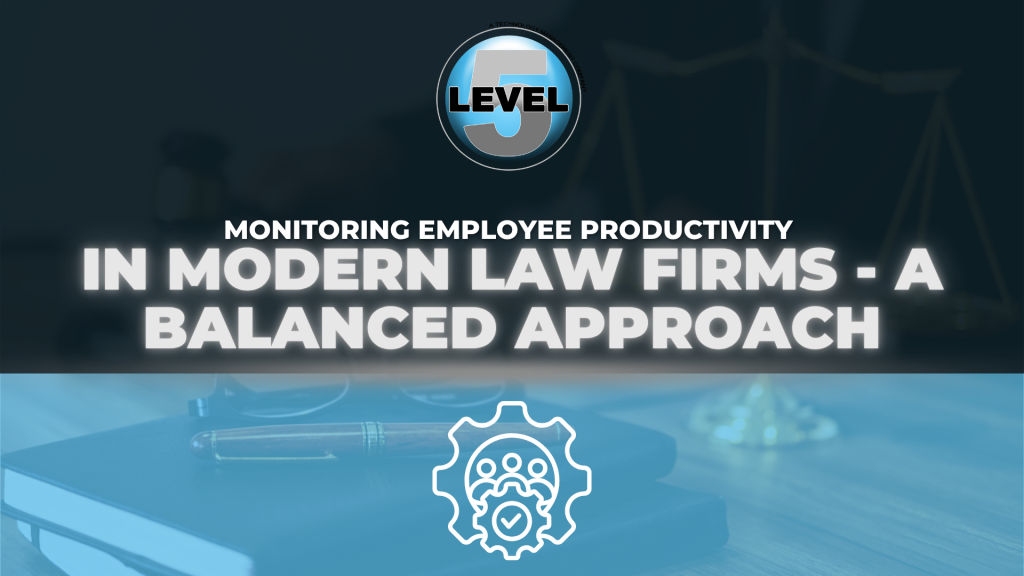While we all have hopes that every employee will give 100% every day and move the business forward, that’s not always the case. Without solid Key Performance Indicators, expectations, and accountability, it’s easy for employees to not have the guidance or direction they need to succeed.
Productivity is not the only reason to monitor the employees at your law firm. Data breaches are also a concern, and it’s important for companies to realize that most cybersecurity risks are associated with employee use and misuse. This is not usually intentional. However, having protocols in place to be able to log and control employee access to your sensitive data provides a way for you to track issues and guard against threats.
Should You Invest in Employee Monitoring?
This isn’t a one-size-fits-all question. Some companies do well with different types of monitoring. For larger enterprises, a data environment that allows your team to grant authority, or access, based on the employee’s needs for certain data can be an excellent benefit. It’s unobtrusive but serves to log all access and changes to documentation, which provides exactly what you need to delineate responsibility.
Developers create many types of software specifically to help smaller companies monitor employee use. Some of these options take screenshots and even use the webcam to take images. As you might imagine, some of these options can seem off-putting to employees. For most companies, it can be an excellent idea to discuss these monitoring options internally and to get a good understanding of how staff members feel about them. You don’t want to increase employee turnover rates in your quest to improve productivity. A staff that’s happy often works much harder and is more productive, so there is a balance in this decision-making process.
However, with that caveat in place, there are many monitoring options that are unobtrusive and excellent to help with productivity and cybersecurity.
Types of Employee Monitoring
Many of the software and tools you currently use do allow some level of oversight. If your employee is in your company’s database, you should be able to log who they are and what they’re accessing. There are also many tools available. Here, we’ll discuss a few options.
- Microsoft Teams. Microsoft Teams is an excellent organizational tool. It wasn’t developed to monitor activity, but you can use the features to do just that. The Microsoft usage reports and teams reports can help you form a good picture of productivity and use within the Teams environment.
- Monitoring Software. There are many types of monitoring software available, such as Teramind. Employers are not the only ones using monitoring software. As schools and Universities went online for the pandemic, many made monitoring software mandatory for students, as well. Each of the offerings is slightly different, but most of these applications are installed on the device, and they record information. This might include recording what tabs are open, what pages the user is looking at, monitoring keystrokes, and even turning on the camera to take video and still-frame images. Many of these options also allow you to retrieve screenshots.
- Phone Monitoring. Phone monitoring can be an excellent addition because it allows you to collect and use data that would otherwise be lost if the employee didn’t note it anywhere in the customer’s files. Many VoIP systems have extensive reporting options to help you collect data through this communication method.
- Microsoft 365 Reporting. There are many reports that could be helpful for the employee and employer including:
- Email Activity by User
- Contacts Activity
- Calendar Log Events and many others
Conclusion
While there are specific software solutions available to monitor user productivity, many useful tools already exist within your current systems. Metrics like number of calls, productive work hours, and scorecards are often included in these platforms.
Implementing a more comprehensive employee monitoring system is also possible. However, it’s important to consider the potential impact on your company culture before proceeding.
At Level5 Management, we recommend focusing on expectations and accountability first, while making you aware that these tools and systems do exist. Managing them properly is essential.
If you have any questions about leveraging your IT systems to support employee productivity monitoring, we encourage you to reach out to Level5 Management. Our team is here to provide expert guidance and support tailored to your organization’s unique needs.


